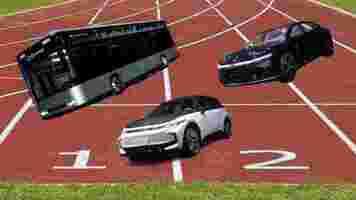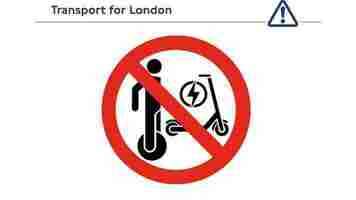Foxconn’s 3 EV prototypes are here — and damn, their range is loooong
Remember Foxconn, Apple’s iPhone assembler? The Taiwanese company is now officially expanding its business areas and joining the EV game.

At the Hon Hai Tech Day ( HHTD21) on Monday, Foxconn unveiled three electric vehicle prototypes, hoping to grow its emergent auto segment into a $35.88 billion (NT$1 trillion) enterprise within the next five years.
The three EVs — an SUV, a sedan, and a bus — were made by Foxtron, a joint venture between Foxconn and Yulon Motor, a Taiwanese automaker, which also produces Nissan and Mitsubishi cars for the local market.
The Model C is Foxconn’s first passenger EV. It’s an average-sized sedan, which is, nevertheless, said to offer maximized storage and seating space. In fact, it’s designed as a comfortable 5+2 seater, thanks to the reduction of space used for mechanical components.
The car can accelerate from 0 to 100km in 3.8 seconds, and has a whopping 700km extended range.


Jointly developed with Italian design firm Pininfarina, the flagship sedan promises smart luxury and enhanced performance.
As such, it comes with 750hp, a zero to 100km acceleration in 2.8 seconds, and (again) a whooping 750km range.
The most interesting features are its smart applications which include among others: face recognition door opening, smart windows, and the transformation of the rear space into a mobile office.
The Model T is what happens when you try to make an urban bus elegant.
According to the company, it has already completed 200,000km of acceleration endurance test and more than 1,000 hours of rigid strength tests at the Automotive Research & Testing Center (ARTC) Testing, to ensure driver and passenger safety.
Its design and protection gear has also gotten the approval of the Federal Transit Administration (FTA).
Other than that, the electric bus can reach a maximum 25% climbing capacity and a maximum speed of 120km — under full load conditions.
Foxconn’s representatives shared with Nikkei Asia that the Model C will enter the market by 2023, estimated to cost $35,700 (NT$ 1 million).
The Model E will be launched a bit later, and the Model T will be the first to hit the roads as early as next year in southern Taiwan. However, no prices have been revealed for any of the two.
In August, the company bought in Taiwan a chip plant from Macronix International for $90.8 million, eyeing to start supplying future demand for auto chips.
One month later, Foxconn struck a $280 million deal with US EV startup Lordstown Motors to acquire its manufacturing plant in Ohio and start producing EVs.
And besides its own electric vehicle lineup… the firm has also targeted supplying with components or services 10% of the world’s EVs by 2025-2027.
This shows that we’re taking about a company that’s not only interested in driving innovation, but that’s also aiming to future-proof its existence in a highly competitive ecosystem.
Do EVs excite your electrons? Do ebikes get your wheels spinning? Do self-driving cars get you all charged up?
Then you need the weekly SHIFT newsletter in your life. Click here to sign up .
Private escooters banned on London’s public transport over fire concerns
This article was originally published by Christopher Carey on Cities Today , the leading news platform on urban mobility and innovation, reaching an international audience of city leaders. For the latest updates, follow Cities Today on Twitter , Facebook , LinkedIn , Instagram , and YouTube , or sign up for Cities Today News.

Privately owned e-scooters will be banned on all Transport for London (TfL) services from next week after an exploding battery caused a fire on a busy Tube service.
Emergency services had to be called to extinguish a blaze last month after an e-scooter’s lithium battery exploded and left smoke billowing throughout the train – prompting an immediate review by the transit operator.
Customers in possession of e-scooters or e-unicycles will not be permitted to enter any premises on TfL’s network or travel on any of its services, including on the Tube, buses, Overground, TfL Rail, Trams and DLR.
“Our primary concern is always for the safety of our customers and staff,” said Lilli Matson, TfL’s Chief Safety, Health and Environment Officer.
“We have been extremely worried by the recent incidents on our public transport services, which involved intense fires and considerable smoke and damage.
“We have worked with London Fire Brigade to determine how we should deal with these devices and, following that review, we have decided to ban them.
“Customers who try to bring them onto our network will be refused access to our stations and premises, and not be permitted to use any of our services.”
The transit operator had previously allowed foldable private e-scooters – which are currently illegal on public roads and pavements in the UK – to be carried as luggage on services.
E-scooters that are part of government-mandated trials have never been permitted on trains or buses as they cannot be folded.
Passengers who ignore the rules face being removed from services and being fined up to £1,000 (US$1,320).
Defective batteries
A review found the fires had been caused by defective lithium-ion batteries which ruptured without warning, leading to toxic smoke being released.
Batteries are thought to be at risk if re-powered with the wrong chargers.


While privately owned e-scooters remain illegal to use in public spaces, they are widely available for purchase and are a common sight on UK roads – despite a crackdown by police over the past year.
London has been trialling a shared e-scooter scheme since June, with micromobility operators and TfL stressing the rental e-scooters have more robust safety features than those bought privately.
The ban will include all e-scooters and e-unicycles, but does not include mobility scooters or foldable e-bikes.
TfL says that e-bikes are “generally subject to better manufacturing standards” and batteries are usually positioned in a place where they are less likely to be damaged and cause a fire risk.
Non-foldable e-bikes will continue to be allowed on some parts of the network at certain times of the day .
‘Growing concerns’
London Fire Brigade Assistant Commissioner for Fire Safety, Paul Jennings, said: “We have growing concerns about the safety of e-scooters due to the amount of fires we are seeing involving them, so we fully support TfL’s ban of private e-scooters on public transport.
“Fires are dangerous and terrifying wherever they happen, but a fire on the transport network has the potential to become very serious very quickly and involve hundreds of people, particularly on trains where evacuation may be challenging, so anything that can be done to mitigate that risk is a positive step.”
Big Tech bet on robotaxis — they shouldn’t have
Tech giants such as Google, Apple, and Amazon had promised that by now we’d be casually riding their robotaxi fleets on a large scale. Of course, that didn’t happen.

Excessively high costs, prolonged testing periods, and safety issues have undoubtedly played their part. But a new threat has emerged as well, as journalist Patrick McGee illustrated in the Financial Times on Monday.
In a very insightful piece, McGee pointed to the rapidly developing Advanced Driver Assistance Systems (ADAS), which, according to experts, might show a better path to fully driverless tech.
The ADAS players are following a bottom-up approach, gradually scaling up the levels of automation.
They believe that the Level 1 and 2 partial automation they have currently achieved can evolve into the sought-after Level 4 and 5 (where a vehicle can truly drive itself), and at a much lower cost.
The mindset behind robotaxis comes in direct opposition, McGee explains. The companies stand for a “moonshot” approach and the plan is either to directly offer full autonomy or nothing at all.
The risk here is that the robotaxi players don’t really have a plan B, which means that, if they fail, they are left completely high and dry.
On the contrary, the Advanced Driver Assistance Systems (ADAS) have dramatically improved, the companies behind them are already offering successful products, and the ADAS market skyrocketed to $25 billion last year.
So the big question, as McGee notes, isn’t whether autonomy will be reached, but by which method — and by extension, by whom.
While the robotaxi hopefuls maintain that the chasm from Level 2 to Level 4 is too big to bridge, the evolutional leap of ADAS might come faster than they can directly unlock full autonomy.
McGees’ piece offers an in-depth analysis of the two competing industries with insightful argumentation and experts’ perspectives. The article is definitely worth a read if you’re interested in the future of fully autonomous driving. You can find it here on the Financial Times .
Do EVs excite your electrons? Do ebikes get your wheels spinning? Do self-driving cars get you all charged up?
Then you need the weekly SHIFT newsletter in your life. Click here to sign up .